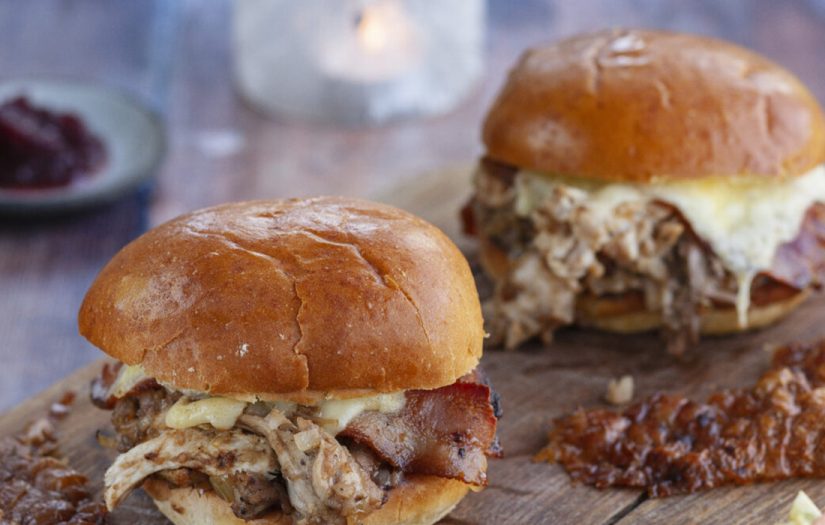
As this is Women’s Health Week, we decided to ask a few experts for tips and advice to help you stay fit and well.
How much is too much?
Dr Sarah Jarvis, LoSalt advisor, is keen to highlight some issues around salt.

Picture courtesy of Dr Sarah Jarvis.
While most of us take notice of the sugar we consume, the same can’t be said for salt.
According to a recent study:
- 89% of women do not know that the maximum recommended limit of salt is 6g/day
- 43% of women would not cut down on salt if they were told to for health reasons
Yet excess salt raises our blood pressure, and high blood pressure is a major risk factor for stroke and heart disease. These are still two of the biggest killers in this country.
In the UK we are still eating far too much salt, which worries me greatly.
That’s why the recent partnership between LoSalt® and the Stroke Association is so important. Together, they are working on a #HealthierUK initiative which will help educate people on why cutting down on salt is important for preventing high blood pressure, as well as overall health.
With a few small changes and swaps here and there, you can make a big difference to your health by bringing your salt intake down.
So why should I be aware of how much salt is in my diet?
Public Health England advises that excess dietary salt is one of the most important modifiable risk factors for high blood pressure.
High blood pressure affects one in four adults and is a major risk factor for stroke and heart disease. Doctors call it “the silent killer” because it often has no symptoms, so you may not even know you have it.
How much salt should we be having?
In the UK, it is recommended that we should be eating a maximum of 6g of salt a day, that’s about a teaspoonful. However, on average we are eating 8g a day, which is far too much. If we were all able to bring our salt intake down to 6g a day it is estimated that it could prevent over 8,000 premature deaths each year.
What is the connection between salt and high blood pressure?
All salt, whether its table salt, rock salt, sea salt or pink Himalayan rock salt, is 100% sodium chloride and it’s sodium which is linked to high blood pressure. When we eat salt, or food containing salt, it’s the sodium which makes your body retain water and that is a big factor in increasing your blood pressure.
I don’t add much salt to food, how am I eating too much?
You may think a teaspoon of salt sounds like a lot and that you don’t use that much salt in your cooking or seasoning.
However, 75 per cent of the salt in our diets is already contained in foods. It is most likely to be found in processed foods such as bread, cereals, bacon, ham, sausages, pickles, sauces and condiments and ready prepared meals.
It’s important to be mindful of the salt you add to food – which is the easiest to modify and keep an eye on – but to also think about the type of food you are eating which can contain hidden salt.
So how can I cut down on the salt in my diet?
- Avoid seasoning and adding salt to food at home. Try using herbs, spices and lemon juice instead. Weaning yourself off salt takes some getting used to, but your palate will adjust
- If you can’t go without salt, then you are better to use a reduced sodium salt like LoSalt instead, which contains 66 per cent less sodium than regular salts.
- Don’t be duped into thinking posh gourmet sea and rock salts are better for you. Some of these manufacturers make very misleading claims. They all contain exactly the same amount of sodium as regular table salt. Any other trace minerals will be present in such small quantities that you won’t get any benefit
- Try to cut down on processed food as this is where the majority of salt in our diets come from. Ready meals, ready-made sauces and soups are often high in salt
- Keep processed meats to a minimum. Bacon, ham and sausages contain salt
- Remember, high blood pressure is very common and it often has no symptoms. It usually affects people as they get older and will be checked as part of your NHS health check which you are invited to every five years between the ages of 40-74. It’s important that you attend these health checks as they can help detect early signs for high blood pressure, stroke, kidney disease, heart disease, type 2 diabetes and dementia.
Five Foods For A Heart Healthy Menu
So now you know what to cut from your diet, but what should you include for optimum health?
Award-winning dietitian Sian Porter, for California Walnuts, has some suggestions.

Picture courtesy of Sian Porter.
Following a healthy diet can have a big impact on heart health.
As well as enjoying plenty of fruit and vegetables and eating enough fibre, the omega-3 fatty acids ALA, EPA and DHA found in foods such as walnuts and salmon can also have a positive effect.
Replacing saturated fats with unsaturated fats (monounsaturated and polyunsaturated) like those found in avocado or walnuts contributes to the maintenance of normal blood cholesterol levels, as part of a healthy balanced diet and lifestyle.
Walnuts
Not only are walnuts a heart health powerhouse with fibre (1.4g/30g serving) and “good” polyunsaturated fats, but they are the only tree nut to contain significant amounts of the plant-based essential omega-3 ALA (2.7g/30g).
Research has shown ALA to have a beneficial role in the prevention of heart disease and stroke. California Walnuts have the heart-healthy seal of approval from the heart health charity, Heart UK.
Avocados
You may be a bit weary of hearing about them but, delicious avocado toast is here to stay. Avocados contain “good” monounsaturated fats (5 grams per serving) too, so your heart will thank you for it.
Salmon
This popular oily fish is easy to find fresh, frozen or canned. It provides a useful amount of essential omega-3 fatty acids EPA and DHA, which contribute to the normal function of the heart and normal blood pressure.
If this fish is not your dish, then try trout, mackerel or sardines but whichever you choose, eat weekly.
Pears
Pears are naturally sweet, and provide 6g fibre per medium-sized pear. That’s one fifth (20%) of the UK adult daily fibre recommendation.
Oats
Oats are a great, heart-friendly choice any time of the day. Try spreading walnut butter on oatcakes for a delicious savoury snack with crunch.
As well as a healthy diet, we also need to ensure that we incorporate exercise into our daily routine.
If you would like to know more about how much you should be doing, click here for the National Health Service guidelines.
Sleep On It
Another factor we need to consider for health is sleep.
Lisa Artis from The Sleep Council has some advice.

Picture courtesy of Lisa Artis.
Sleep really is the answer to feeling and looking your best. People go to huge amounts of time and expense to eat well, look good and exercise regularly but without a good night’s sleep all that effort will be in vain.
And sleep doesn’t just make you feel better. It can improve your health by decreasing the risk of heart attacks, diabetes, strokes. Plus, it helps us fight off minor ailments, deal better with depression and even tackle weight problems.
Women are more likely than men to have difficulty falling and staying asleep. They also experience more daytime sleepiness at least a few nights/days a week. This is usually down to stress, worry, children and hormones.
Lots of people find it hard to drop off at night and this can be down to several factors. Some can be eliminated by a change in lifestyle habits, such as avoiding foods and drinks that can hinder sleep, increasing exercise and making sure your bed is comfortable and supportive.
Other things to consider are your sleep environment – is it right for sleep? Make sure it’s dark, quiet, cool and gadget free. Turn off mobile phones, tablets etc well before bedtime and, if you can, ban them from the bedroom altogether.
Ensure you wind down properly before bed. Do something relaxing such as reading a book or have a soothing bath. If you haven’t fallen asleep in 20 minutes, get up and go do something else. Lying in bed worrying about sleep only heightens anxiety about getting a good night’s kip.
For more health advice from “The People’s Friend”, click here.
For more on Women’s Health Week, click here.




